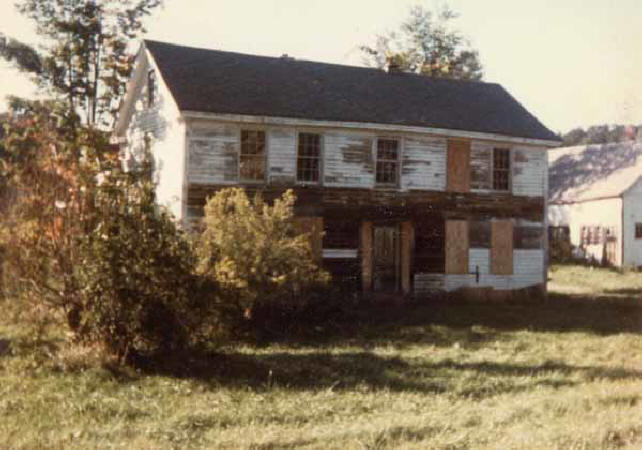
THE RESTORATION OF JABEZ NEWHALL’S TAVERN
CHAPTER 1 -- SEPTEMBER 1985 -- AS FOUND
____________________________________________________________________________

____________________________________________________________________________
It was a stroke of fate that brought us together—an off-hand comment in her Smith College office by Jan's colleague, Bill Sheehan.
Jan was poring through real estate advertisements, hoping to find an early house that a couple with less than modest means could afford.
"You're looking for a house that's about to be bulldozed?" Bill said. "I have one of those."
"Where is it?" Jan asked.
Bill replied, "In Conway - it's on the common."
"Does it have any chimneys?"
"No," replied Bill.
Just as he reached the doorway, he turned and added, "They all fell down and broke the floorboards."
"Where is it?"
____________________________________________________________________________

Before the day ended we had driven to Conway from our apartment in Northampton and had crawled through the foliage which engulfed the derelict house to get a closer look at its insides.
____________________________________________________________________________
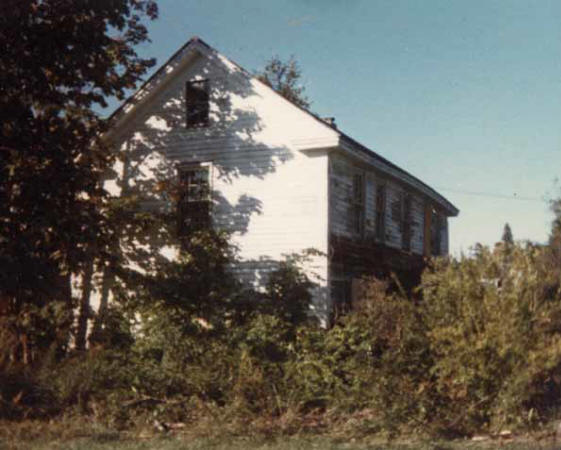
Vacant for decades, it had evolved through two centuries, beginning as a humble 18th century dwelling in the "west part" of Deerfield.
____________________________________________________________________________
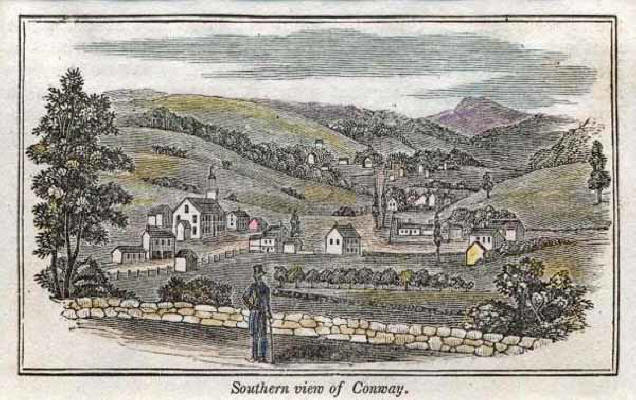
After the incorporation of the town of Conway in 1767, the owners of the house flourished, as did the fledgling town,
and the property expanded in size and sophistication to become a tavern on the town green of colonial Conway.
The print is taken from John Barber's Historical Sketches of Massachusetts, first published in 1839.
____________________________________________________________________________
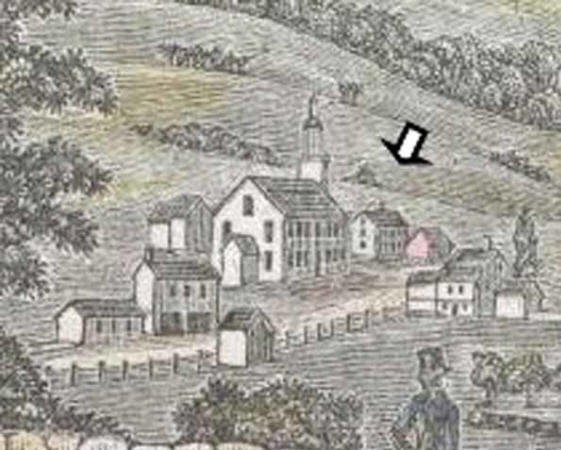
Our house and a small barn at the road's edge are visible in this print.
We believe that the barn was later moved to the rear of the house. It is now our porch.
____________________________________________________________________________
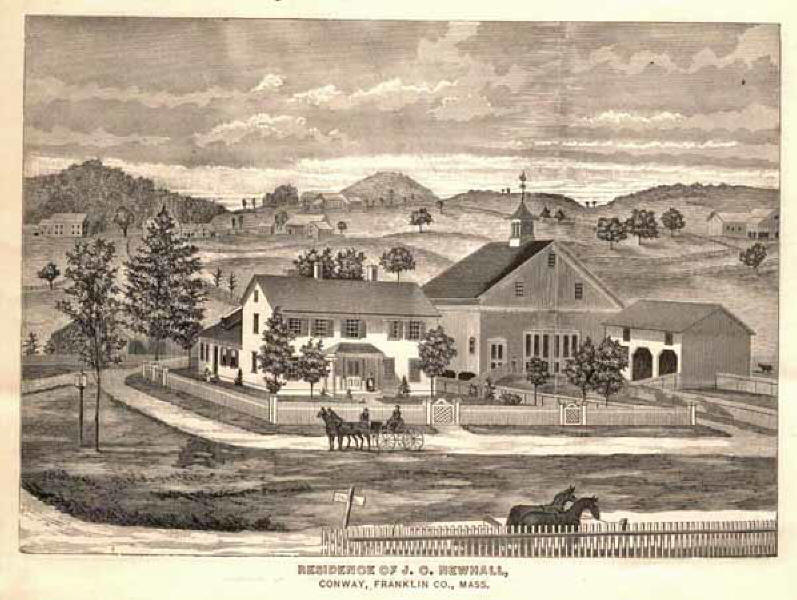
At the beginning of the 19th century the town's fortunes shifted as new roads diverted traffic and commerce from Conway's historic center.
As this shift occurred, and the town became agricultural once again, the Newhall farm became one of Franklin County's important dairies.
Their prosperity is reflected in the print above, published in History of the Connecticut River Valley, published in 1879.
____________________________________________________________________________
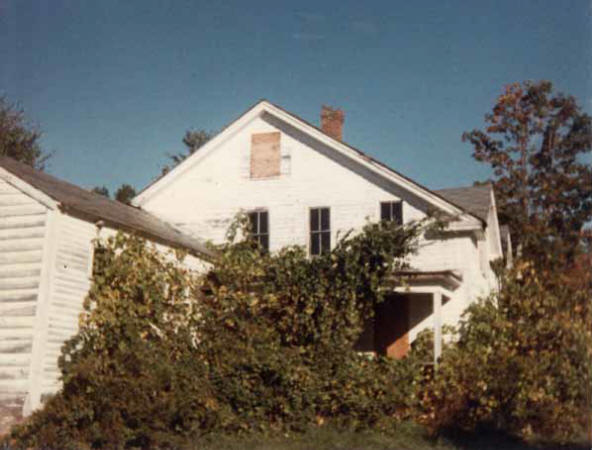
By the middle of the 20th century, though, the farm had come upon hard times.
The house was divided into two separate apartments, which were eventually abandoned.
Next came at least two failed attempts at “fixing-up”, followed by two decades of neglect.
____________________________________________________________________________
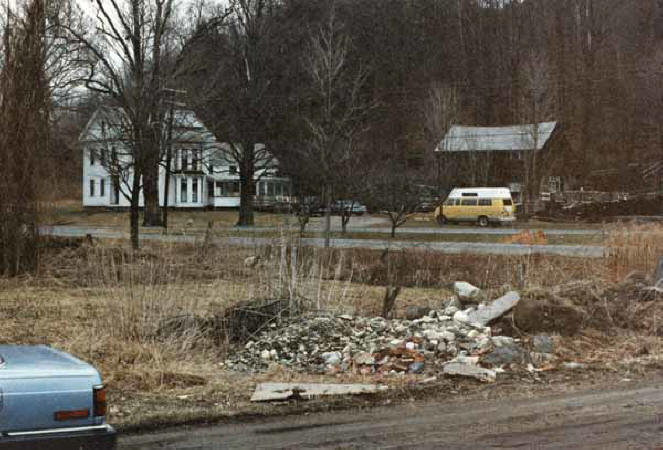
By the time we came onto the scene, the property was in such decline that those who earlier had pondered restoring it were unwilling to risk time and money in such a hopeless project.
During the early stages of our work, one of the "fixer-uppers", a well-known local curmudgeon, parked his car, walked over to us, announced, cynically, "You're wasting your time; it can't be saved," and drove away.
____________________________________________________________________________

Inside and out, the condition of the property was abysmal, but its age and potential were clear to us.
Bill Sheehan and his wife, Katy Robertson, who lived on the hill behind our property, had bought it to protect the land and the wonderful barn that dominated their easterly view and had for more than a century been a Conway landmark.
We convinced them (and ourselves!) that we could save most of the decrepit buildings, and within two weeks we had agreed upon a purchase price.
Thanks to their concern for an important piece of Conway's history and their confidence in us, the rescue of the property became our priority.
____________________________________________________________________________
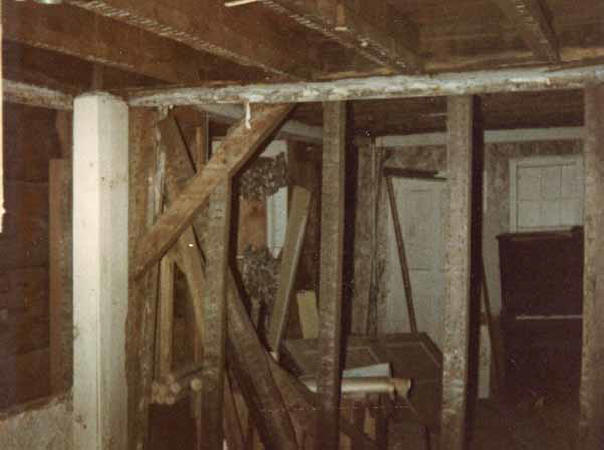
Inside the house, made even more dismal by the sheets of plywood nailed over most of the windows to discourage vandalism, walls had been stripped of plaster and lath.
____________________________________________________________________________
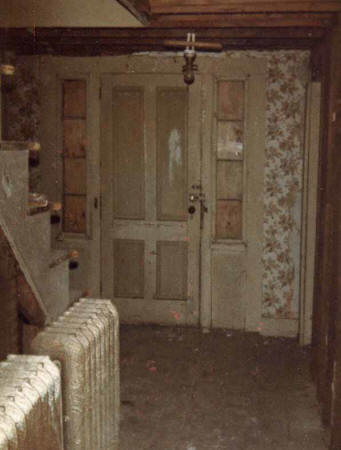
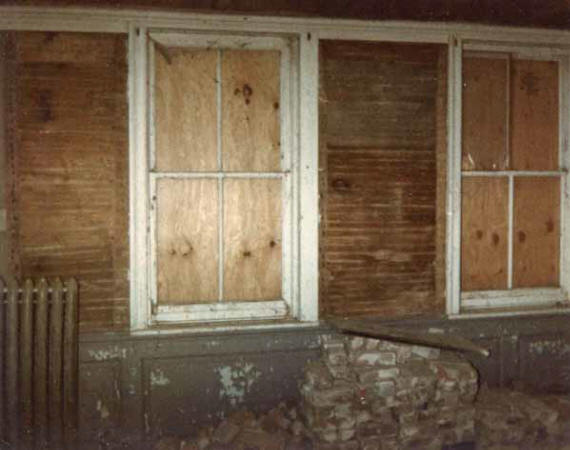
Many floors and ceilings gaped threateningly.
Several rooms contained cast iron radiators, although the house had neither furnace nor water.
____________________________________________________________________________
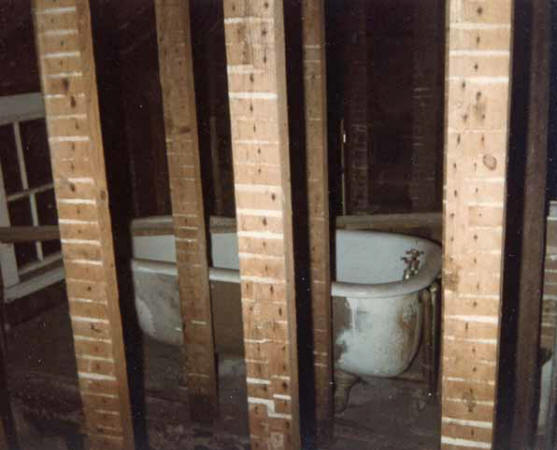
An aged claw-foot bathtub sat where there had once been a bathroom.
Thanks to our obliging plumbers, it has been restored to usefulness in one of our bathrooms.
____________________________________________________________________________
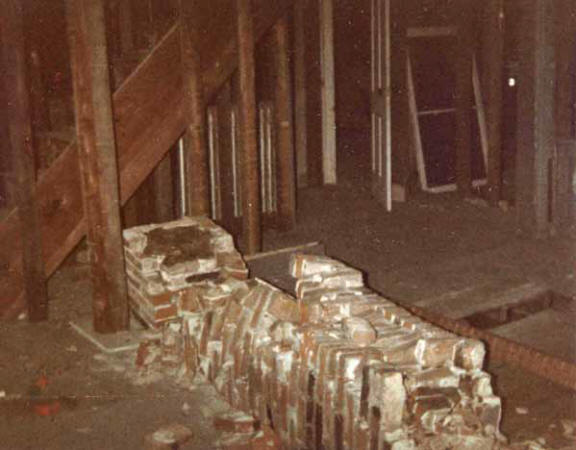
Twin chimneys, which had been built in the 19th century, when the original center chimney was replaced with a black walnut central stairway, were lying on the floor, where they had crashed during a failed attempt to remove them brick by brick.
In what is now our living room, the impact of the falling masonry had broken two of the large roughly sawn hardwood floor joists.
____________________________________________________________________________
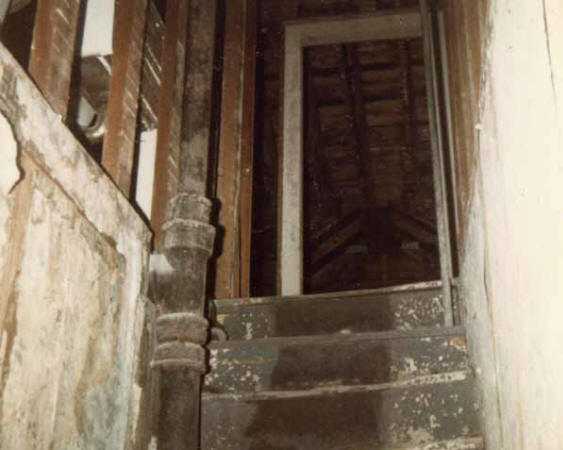
An ugly soil stack, stained wallpaper, and peeling paint dominated the rear staircase.
____________________________________________________________________________
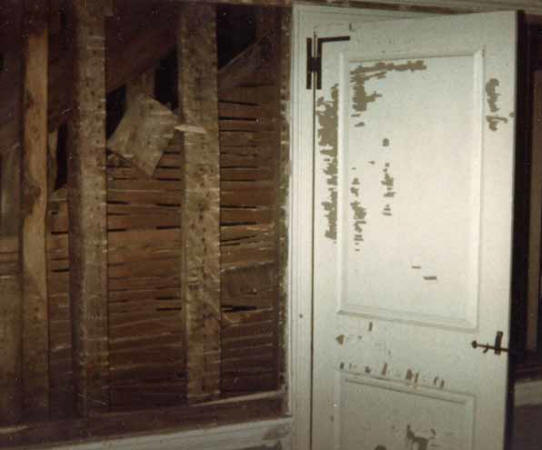
Most of the original, 18th-century woodwork was gone, though - almost miraculously - all but one of the floors were at least partially intact, and more than 20 original doors had been saved.
____________________________________________________________________________
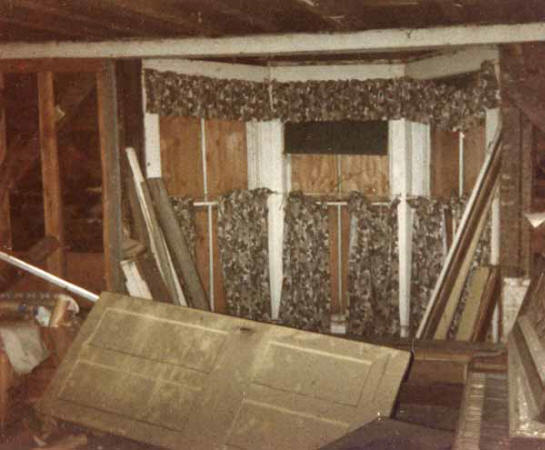
But no room in the house was not cluttered with debris of 20 years of misdirected efforts.
____________________________________________________________________________
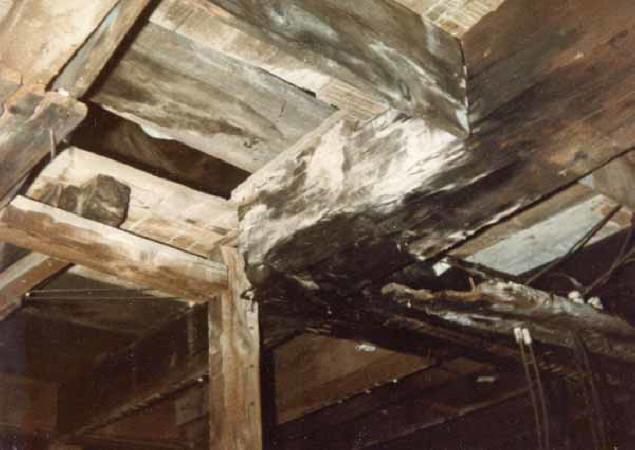
On the second floor, charred timbers around the Victorian chimney opening in what is now our bedroom offered testimony to the fire which almost took the house in the 1970’s.
____________________________________________________________________________

The house was in terrible disrepair, from foundation to roof.
The list of tasks required to make it livable again astonishes us today as we look back.
____________________________________________________________________________
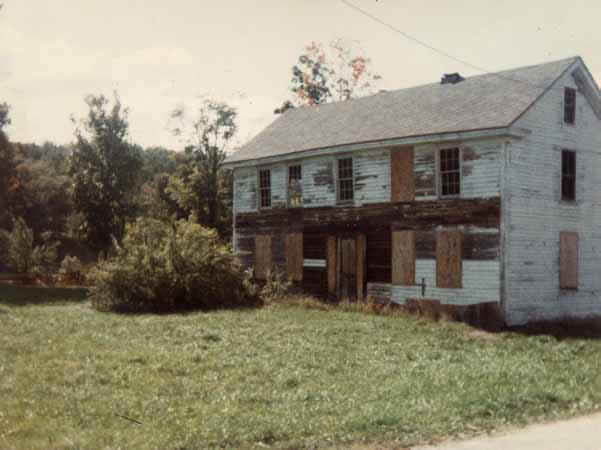
But the house is only part of the story.
In addition to the three buildings that then comprised the house, there were three barns, a milk room, a three-stall shed, and two huge silos.
Many of these had sheds or porches attached, and all were in roughly the same condition as the house.
____________________________________________________________________________
Click here for Chapter 2: SEPTEMBER 1985 -- THE OUTBUILDINGS
____________________________________________________________________________
Chapter 1: AS FOUND: SEPTEMBER 1985
Chapter 2: SEPTEMBER 1985 -- THE OUTBUILDINGS
Chapter 3: PHASE I: DEMOLITION
Chapter 4: NEW FOUNDATIONS AND CHIMNEYS
Chapter 6: RE-SHAPING THE EXTERIOR
Chapter 7: PREPARING FOR OUR FIRST WINTER
Chapter 8: SPRING 1987 -- CLAPBOARDS AND PAINT
Chapter 9: OUTBUILDINGS: THE CARRIAGE HOUSE
Chapter 10: OUTBUILDINGS: SHED, MILK HOUSE, AND BARN
Chapter 11: RESTORING THE CUPOLA
Chapter 12: GARDEN AND FRONT DOOR